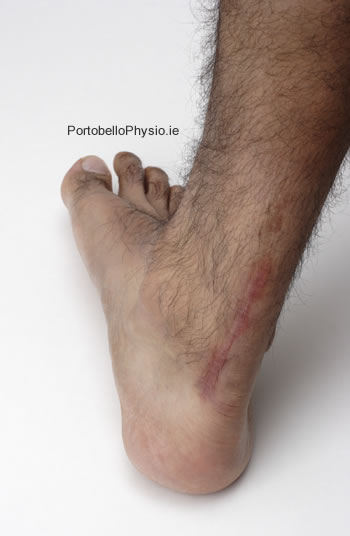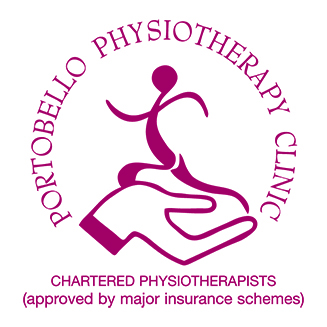Chartered Physiotherapists
Specialists in Musculoskeletal Physiotherapy
Achilles Rupture
Achilles tendon rupture occurs when there is a partial or complete tear of the Achilles tendon. Its happens when the tendon is loaded beyond its capabilities resulting in tissue failure. This may arise in situations or sports where an individual is being asked to accelerate or decelerate at speed and large forces are being transmitted through the tendon and ankle joint. The two main predisposing factors to Achilles rupture are poor flexibility and conditioning of the calf muscle. Not surprisingly the demographic at highest risk of Achilles rupture is the middle aged athlete who has been training very little and is out of shape.

Symptoms
Following partial rupture of the tendon patients may be able to place some weight through the leg, however in cases where there is complete rupture patients will be unable to weight bear. In cases where there is a complete rupture patients will often describe a large popping sound. There may not be a huge amount of pain due to the fact that the nerve endings within the tendon have been completely severed.
Treatment
Achilles rupture can be treated with either surgical intervention or conservative management. Surgical intervention consists of sewing the two ends of the torn Achilles tendon together followed by a post-operative period where the ankle is placed in a plaster cast or brace. The conservative approach allows the tendon to mend naturally with the ankle resting in a brace or plaster cast. Both approaches require a period of immobilisation of at least 8 weeks before physiotherapy intervention can begin.
Initially when patients present to physiotherapy following Achilles rupture they will still be using crutches for assistance and the muscles and healing tendon will be extremely weak due to the long period of immobilisation. Our Chartered Physiotherapists will gradually return you to full function and health using a combination of progressive strengthening and flexibility exercises. Other treatment approaches which we use to help speed up healing and improve tissue quality include Laser, ultrasound, and Deep Tissue Massage.
Ready to take the next step?
Learn more about our Patient-Centered Approach to Care or schedule a new patient consultation.


